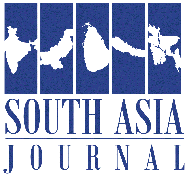
A worker at a garments factory in Dhaka, Bangladesh, on June 12, 2024. © AP
Henny Sender
With almost 180 million people living on low-lying plains between India and Myanmar, the image of Bangladesh is that of a country plagued by disaster, whether natural or manmade. Floods and rising sea levels threaten to inundate the capital city of Dhaka, which like Amsterdam lies below sea level but does not have the means to build dykes and other protective infrastructure. Periodic fires kill hundreds of factory seamstresses, as happened in the industrial sweatshops of New York a century ago.
Yet, despite its image as a third-world basket case, Bangladesh has become a role model for emerging markets aspiring to move their people out of poverty. Although it is among the countries most affected by climate change, it has also been growing at more than 4% per year for three decades. Moreover, it is expected to graduate from its less developed country status in 2026 and achieve an upper middle income ranking this decade. Even today, its per capita income is higher than that of India. Bangladesh has come a long way.
Its success has been driven by light manufacturing, which in turn depends largely on a garment industry that accounts for over 80% of exports by value. Furthermore, despite its image, production doesn’t center around the lowest-end T-shirts. Think instead of the highest value-added winter wear; down-filled hooded coats and soft fleece vests made for upmarket brands such as Lululemon, North Face and Patagonia.
Yet the question today is whether this economic template built on light manufacturing for export can continue to take the country forward. Sadly, it is difficult to be upbeat about Bangladesh’s prospects. It has become “a post tiger economy,” notes a recent report from Emerging Advisors Group, a China-based macro research firm. “Bangladesh basically got stuck as a ‘one trick pony’ with a strong textile sector but no diversification into other areas. [It] hasn’t been able to attract investment in the broader light manufacturing universe and hasn’t been a beneficiary of the China diversification trade.”
“The problem is that there is only the garment industry,” said Samiran Chakraborty, chief India economist for Citigroup. “Everything depends on that.” Ironically, It is precisely because the garment sector is so strong that the country is experiencing so much difficulty moving beyond that template.
Youngone is the country’s single largest private sector employer and largest exporter. The $1 billion it pays the government each year puts it among the largest taxpayers. Most of Youngone’s operations are in an export processing zone the company created across the river from the airport in Chittagong, Bangladesh’s second-largest city. Long low buildings sit among 2-meter-high trees the company planted in what was once sandy soil (with five elephants occasionally seen by the 70,000-plus people who work there.)
But moving away from its over-reliance on the garment industry is only one of Bangladesh’s challenges. A mix of political and economic factors are more pressing.
Before the coup in August that led to Prime Minister Sheikh Hasina fleeing to India, corruption was a huge issue.
Bangladesh was “an example of elite capture,” said one official at the International Finance Corporation arm of the World Bank. “Members of Parliament all had vested interests, and government policies reflected their self-interest. A few families control all the banks.” They still do, and the oligarchs have grown accustomed to not merely dictating policy to bureaucrats but writing actual laws.
Since Hasina’s fall, an interim government led by Nobel Peace laureate Muhammad Yunus has been formed in Dhaka that excludes politicians from either Hasina’s Awami League or the opposition Bangladesh Nationalist Party (BNP) and instead relies on untried academics, bankers and economists, many of whom have lived overseas for years.
But the old guard has not given up on regaining power.
“Given the vested interests and inflation, this government will inevitably fail,” said one local journalist who works for an Indian media company in Dhaka. “Every political party opposes this government and tries to bring it down.”
“The main problem is the deteriorating law-and-order situation,” said the chief economist in Dhaka for a major international bank. “The police are not fully functional, nor is the administration or the judiciary. The interim government can’t replace all the people who had vested interests in the previous regimes. They can’t really execute on the reform agenda.”
Last summer, Lutfey Siddiqi was a banker at the London office of UBS. Today he has returned to the country and serves as an adviser to the temporary head of the government, Mohammad Yunus. “The deep state is real,” he lamented over coffee. “There are political implants everywhere from the previous regime. The ruling party militias just switch jerseys. The bureaucrats just try to slow things down. Yet we cannot be authoritarian.”
Economists have halved their growth forecasts for 2025, the currency has weakened and reserves have dwindled. Inevitably, inflation has grown far more severe. “The cost of rice has doubled,” the journalist said. “So people feel that they were better off yesterday than they are today. They survive from day to day. So they can’t wait for a better tomorrow.”
Given that uncertainty, there has been virtually no new investment from abroad. In the past, the largest investments came from the oil and gas industry and required the kind of long-term perspective that is difficult to find when there may be no better tomorrows.
Sadly, for Bangladesh today there are no easy answers.
source : asia.nikkei

